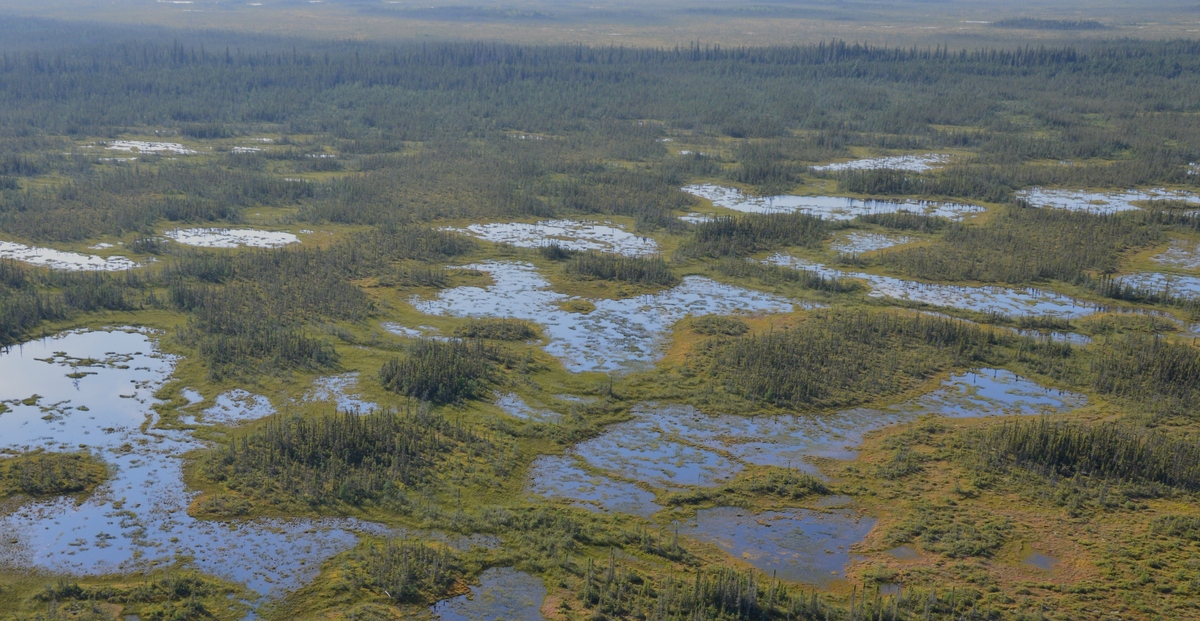WCS High-Integrity Peatlands Cross-Regional Initiative
Our Work
WCS is working to protect peatlands globally, with on-the-ground work in priority HIP regions and countries.

These projects are in places like:
- Pastaza portion of Pastaza-Maranon complex, Peru
- Karukinka, Chile
- Tierra del Fuego, Argentina
- Hudson Bay Lowlands, Canada
- Cuvette Centrale, Republic of Congo
- Singkil Wildlife Reserve, Aceh
Canada
Only 3% of the planet’s surface is made up of peatlands, but 25% of this area is within Canada. Those areas are estimated to store 150 billion tonnes of carbon. That’s equal to 11 years of current global greenhouse gas emissions.
A Globally-Important Carbon Storehouse
We need to better quantify where peatlands are and which areas are at the highest risk of human-caused disturbance.
Act NowThe essential carbon service provided by northern peatlands
Proactive protection of northern peatlands must be a critical component of nature- based solutions for climate change, says paper in Frontiers in Ecology and the Environment.
Act NowA vital cost-effective approach to curbing Canada’s climate impact
Protecting and maintaining northern peatlands, which are huge stores and important sinks for carbon, is essential to meeting national and global climate targets.
Time to Start Paying Attention to Canada's Peatland
A huge part of Canada's northern geography, peatlands are critical to regulating our climate—and more, writes WCS's Meg Southee for Canadian Geographic.
Act NowStory Map: Northern Peatlands in Canada
Indigenous leadership is essential in protecting northern peatlands in Canada, including the biodiversity and carbon.
Act NowOpinion: Government must make the case for mining in the ring of fire
The success of mining projects depend on solid environmental assessments, write WCS's Constance O’Connor and Justina Ray for Northern Ontario Business
Act Now
Chile
There is a historical interest and effort by various stakeholders in Chile and Argentina to advance in the conservation of Patagonian peatlands, contributing from scientific knowledge, design and planning for the management of a rational extraction and the implementation of protected areas, and from the valuation of these ecosystems through education and art.
Story Map: Voices of Patagonian Peatlands
Get to know these enigmatic wetlands through the contemporary voices of those who share their territories.
Act NowWatch: Workshop on Patagonian Peatlands
Watch this binational gathering that featured WCS Chile's Barbara Saavedra and more.
Act NowPatagonian Peatland Initiative: conservation partnership for thriving peatlands
Watch this presentation from COP26 on PPI, a locally-based, multi-actor, multi-scale partnership with global implications in climate change mitigation.
Act NowTurba Tol
Based on over a decade of eco-cultural cooperation in Tierra del Fuego, Turba Tol comes from the trans-disciplinary research practice of Ensayos and rethinks the role of art, creating growing communities oriented towards biodiversity conservation and coherent environmental actions.
Act NowCongo Basin
The Congo Basin houses the world's most extensive tropical peatland complex. But there are questions about whether these carbon stocks are under threat and, if so, what can be done to protect them.

Peru
Peru boasts peatlands from its Pacific coast all the way to the Amazon Basin, which is one of the largest peatland areas in the tropics. 28.2% of the Peruvian Amazon is made up of wetlands, with peat soils covering a total of 7,540 square kilometers, and recent studies have extended their known distribution by 61% within the Pastaza Basin.
Video
What Are Peatlands?
Peatlands are freshwater wetlands that accumulate organic matter. They are often characterized by specialized forms of plant life and deep, water-logged soils.
Despite occupying a fairly small area of the planet, peatlands store a vastly disproportionate quantity of carbon. This carbon would otherwise be released into the atmosphere, worsening our climate crisis. Peatlands also absorb, filter and slowly release water, which regulates water supply and helps combat droughts and floods that have have become more common due to climate change.

In the News
The New York Times
THE WORLD'S PEATLANDS ARE CLIMATE BOMBS WAITING TO DETONATE

Sign Up for Email Updates
Get news from the field and learn about ways you can help Earth’s most threatened species.













